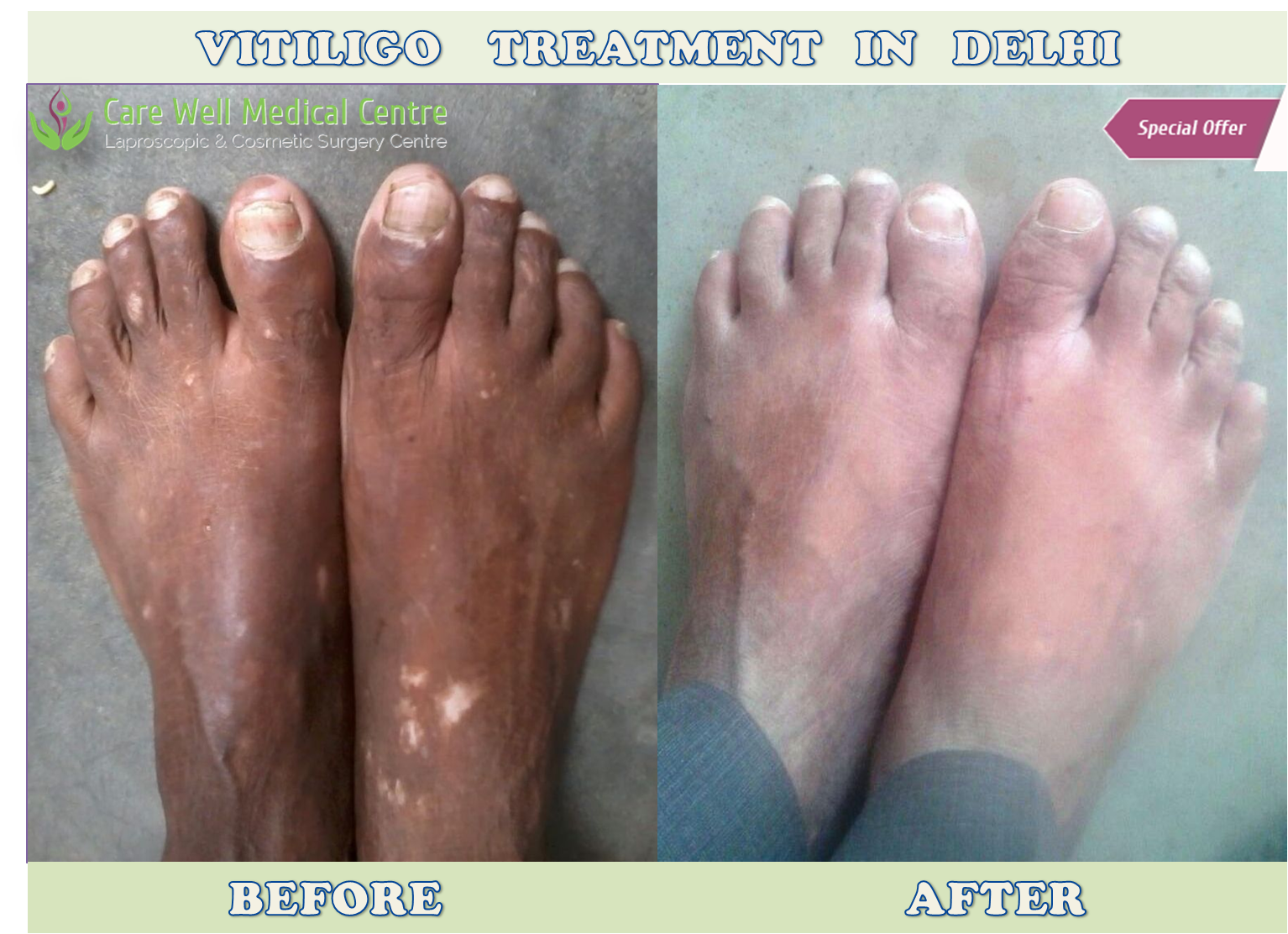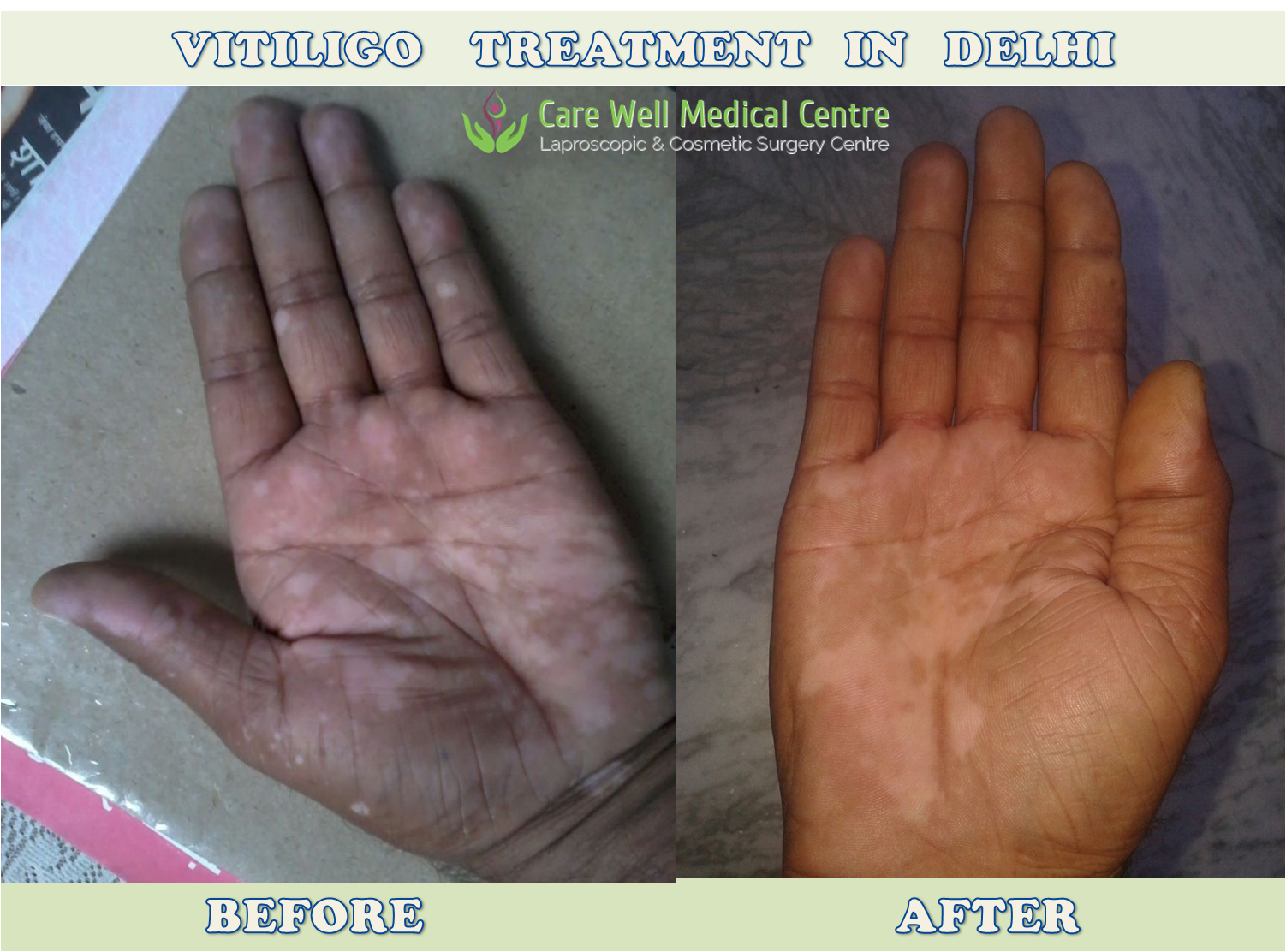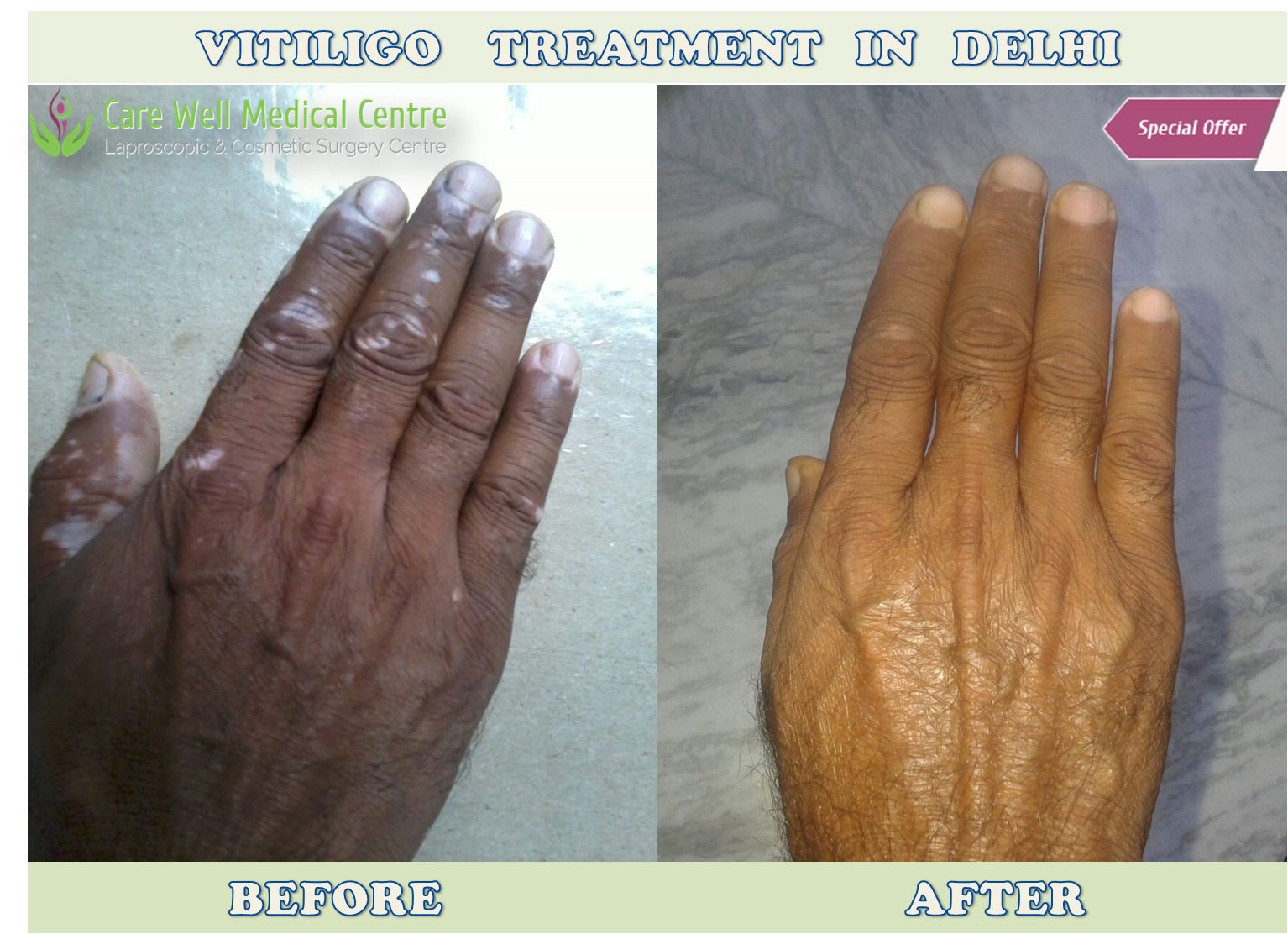Melanocyte transplantation done at Care Well Medical Centre follows the same guidelines laid out by (SWEDISH PROCEDURE)
Initially the melanocytes were harvested from a small part of normal skin, grown in laboratory & was then transplanted on to the depigmented patch after dermabrasion.
But now a modified procedure is being done where-in the harvested melanocytes are immediately transplanted on to the depigmented patch.

Melanocyte transplantation is the latest surgical method for the treatment of stable vitiligo / leucoderma and loss of pigmentation.
Melanocytes are the skin cells which produce melanin In some diseases as vitiligo melanin pigment is destroyed. There can be other causes of this pigment loss also. This can be post burn skin lesions, chemical injury, Peibaldism, nevus depgmentosus or Discoid Lupus Erythmatosus.
In active stage of disease Medical treatment is used. In stable disease Surgical treatment is used.
Till now skin gtafting or Punch grafting was available. But now with new technology we have a breakthrough in treatment of stable vitiligo. This is Non cultured Melanocyte Transplantation. It is done in day care procedure and results are quite gratifying for patient.
There are two main categories of patients that are most suited to melanocyte transplantation.
a) Indicationsb) Patients who have had stable vitiligo patches for a period of at least 6 -12 months are good candidates to undergo melanocyte transplantation.
1. OLD White patches should not have increased in size.
2. No new patches should have appeared on other areas.
3. Any injury should heal with normal skin color.

Melanocyte transplantation is the most advanced surgical method to treat vitiligo / leucoderma. Large areas can be treated. Repigmentation occurs in about 4 to 6 months and cosmetic results are superior to other surgical methods such as skin grafting and punchgrafting. Difficult areas like bony surface, areola, genitals and knuckles can be treated with excellent results.

1. Segmental - Best response and most suitable. Success rate 94% ( See below)
2. Focal - Very good response and suitable. Success rate 80%
3. Vulgaris - Responds well on lower extremity, poor response on face. Success rate 75%
4. Acral - Poor response in all areas. Success rate 20%
Success rate of treatment is 94% i.e. 94% of the treated patients develop pigmentation over 65% to 100% of the treated area. A statistical figure of success rate applies to a group of people and not to an individual patient.
1. Segmental - Almost no recurrence
2. Focal - Minimal chance of recurrence. It can develop in vulgaris type.
3. Vulgaris - can recur.
4. Acral - Very high rate of recurrence.
In one operative session up to 100 cm2. white patches can be treated depending upon the sites involved. If affected area is large, patient has to undergo multiple sessions.
The treated site is protected by a dressing for one week. Verbal and written post treatment instructions are provided. Dependant on the site that was treated, no further dressing is required and you will need to follow the instructions that were given. There is usually no bruising or swelling. Some patients may feel minor discomfort at the biopsy and treated site for a few days which can be treated with a mild painkiller if wished. Recovery is remarkably quick. When dressings are removed the treated area appears bright red. Repigmentation is seen only after 4 to 6 weeks in brown skin population and 8 to 12 weeks in Caucasians. It takes about 6 months to achieve maximum results.
1. Since no medicines are used except post-operative antibiotics, there are no side effects.
2. Scarring and Koebner's phenomenon are rare complications. Trauma of surgery may cause new lesions (Koebner's phenomenon) and is seen in approximately 2% of our patients. Use of oral prednisolone at surgery may prevent Koebner's phenomenon.
3. There may be a hypopigmented ring at the borders of treated and repigmented patches in some patients. Usually this ring disappears automatically or with application of local steroids, or by repeat surgery.
4. Bacterial infection. All patients are given oral antibiotics to prevent chances of infection.
 Increasing number of men and women who want to get rid of droopy upper eyelids and lower lid bags are achieving rejuvenated and young they desire from a special cosmetic surgery
Increasing number of men and women who want to get rid of droopy upper eyelids and lower lid bags are achieving rejuvenated and young they desire from a special cosmetic surgery We, a team from Care well Medical Centre have been in Hair Transplantation for last 10 years. Initially FUT or Strip method was used. From last 4 years FUE is gaining popularity.
We, a team from Care well Medical Centre have been in Hair Transplantation for last 10 years. Initially FUT or Strip method was used. From last 4 years FUE is gaining popularity. Care Well Medical Centre is a renowned cosmetic surgery, plastic surgery and hair treatment center in South Delhi in CR Park touching nearby areas
Care Well Medical Centre is a renowned cosmetic surgery, plastic surgery and hair treatment center in South Delhi in CR Park touching nearby areas Carboxy therapy mentioned to the administration of carbon dioxide gas in cutaneous and subcutaneous nerves for therapeutic purposes.
Carboxy therapy mentioned to the administration of carbon dioxide gas in cutaneous and subcutaneous nerves for therapeutic purposes. A fat grafting process involves transfers of fat from excess fat areas i.e. outer thighs in and injects it into areas that may be lacking in volume i.e. face, hands, breasts or buttocks.
A fat grafting process involves transfers of fat from excess fat areas i.e. outer thighs in and injects it into areas that may be lacking in volume i.e. face, hands, breasts or buttocks. Cavitation is body sculpting with out anesthesia, with out scars, with out discomfort, with out down-time and presents a risk-free substitute to liposuction.
Cavitation is body sculpting with out anesthesia, with out scars, with out discomfort, with out down-time and presents a risk-free substitute to liposuction. CARE WELL MEDICAl CENTRE conducts Camp in Mandakani Welfare association, Chitranjan Park on 16th August 2014. The camp was headed by Dr. Sandeep Bhasin and his team.
CARE WELL MEDICAl CENTRE conducts Camp in Mandakani Welfare association, Chitranjan Park on 16th August 2014. The camp was headed by Dr. Sandeep Bhasin and his team. Even now, after all these years, she can realize the moment when she first spotted a numb skin patch on her back.
Even now, after all these years, she can realize the moment when she first spotted a numb skin patch on her back. Address: 1, NRI Complex, Mandakini,
Chittaranjan Park, South Delhi - 110019
Phone: +91-9818704499, +91-9311444806
Email: info@carewellmedicalcentre.in
Copyright © 2015, Care Well Medical Centre. All Rights Reserved
Powered by Anvita Tours2health Pvt Ltd.


